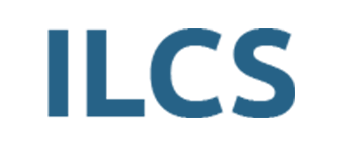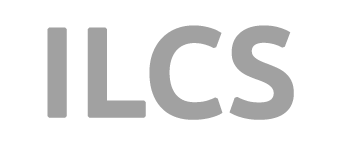Jednoznaczna Komunikacja: AIr Traffic Control at Vestas / Szczecin 28.01. 2020
CEL:
- Opracowanie / wdrożenie / skutecznego systemu wsparcia komunikacji w środowisku wielojęzycznym i wielokulturowym
- forma, obszar implementacji, osoby, narzędzia, metodologia stworzenia wspólnego języka
AVIATION:
- the language designed to ensure the unambiguous pilot-controller/ pilot-pilot / pilot-other crew communication
- employs a specific set of vocabulary, expressions and functions
- efficiency rather than linguistic proficiency is the criterion by which communication is assessed
- communication is predominantly oral and most often with no visual contact
COMMUNICATION PROCEDURES ASSIST PROPER PERFORMANCE OF THE COMPLICATED TASKS- YOU NO LONGER FOCUS ON THE COMMUNICATION BUT ON THE TASK PROPER
1977- najtragiczniejszy wypadek w historii lotnictwa/ początek jednolitej komunikacji ATC (42:54)
ALFABET LOTNICZY
Alpha Bravo Charlie Delta Echo Foxtrot Golf Houston India Juliet Kilo Lima Mike November Oscar Papa Romeo Quebec Sierra Tango Uniform Victor Whisky Zulu
WYMOWA
- Liczby: 3 / 4 / 5 / 9
- Rytm
- Udźwięcznianie lub wręcz utwardzanie “syczących” spółgłosek , np. ‘th’
ZNACZENIE WYRAZÓW I ICH ZASTOSOWANIE W OKREŚLONYM KONTEKŚCIE
- hold short (vs stop)
- take off (vs departure/ line up/ start)
- clearance (vs permission)
- taxi
- apron (vs parking)
- soul
KOLEJNOŚĆ ELEMENTÓW KOMUNIKATU
- Callsign
- Destination
- RWY
- Initial heading
- Vectors
- Initial/ Cruising altitude/ time
- Transponder
KOLEJNOŚĆ KOMUNIKATÓW: LINK JFK
We have the fantastic capability of seeing the regularity in numbers/ treating them as a part of language organized in the logical sequence of meaning.
- 7H15 M3554G3 53RV3570PRoV3 M1ND5C4NDO 4M$Z1NGH1NG5!
- This message servestoprove mindscando amazingthings.
GRAMATYKA
- używamy wyłącznie najprostszej gramatyki
- komunikujemy się prosto i jednoznacznie- krótki/ jasny kod komunikacyjny na który wszyscy się zgadzamy i przestrzegamy go w strukturach poziomych/ pionowych
- używanie wyrafinowanych struktur gramatycznych i leksykalnych uważane jest za niekulturalne i jest karane podczas egzaminu
- za każdym razem mówiąc/ pisząc myślimy o adresacie komunikatu- ma nas zrozumieć
- okresowa weryfikacja umiejętności niezbędna dla wykonywania lotów w obszraze kontrolowanym: WSZYSCY ZDAJĄ TEN SAM EGZAMIN (piloci linii lotniczych, jednostek specjalnych GROM i SAR, kontrolerzy ruchu lotniczego, piloci “małego lotnictwa” lub business jets)
“ZACHWASZCZANIE” JĘZYKA
“yyyy”/ “something like that”/ “or something”/ ” and you know”/ “so”/ “well”/ “and what else”
METAFORY I IDIOMY
Sytuacja Emergency- poza procedurami
ZNACZENIE “CHECKLIST”
KTO MA KOMUNIKOWAĆ SIĘ Z KIM
KIEDY? a nawet bardziej PRZED JAKĄ KOLEJNĄ CZYNNOŚCIĄ
CZY WYSTARCZY SAM KOMUNIKAT? CZY KONIECZNE JEST POTWIERDZENIE ODBIORU (JAK) ? CZY KONIECZNE JEST POWTÓRZENIE KOMUNIKATU
Atul Gavande: ‘The Checklist Manifesto’
‘The modern world has given us stupendous know-how. Yet avoidable failures continue to plague us in health care, government, the law, the financial industry—in almost every realm of organized activity. And the reason is simple: the volume and complexity of knowledge today has exceeded our ability as individuals to properly deliver it to people—consistently, correctly, safely. We train longer, specialize more, use ever-advancing technologies, and still we fail. Atul Gawande makes a compelling argument that we can do better, using the simplest of methods: the checklist. In riveting stories, he reveals what checklists can do, what they can’t, and how they could bring about striking improvements in a variety of fields, from medicine and disaster recovery to professions and businesses of all kinds. And the insights are making a difference. Already, a simple surgical checklist from the World Health Organization designed by following the ideas described here has been adopted in more than twenty countries as a standard for care and has been heralded as “the biggest clinical invention in thirty years’
Successful business correspondence in the global environment with Air Traffic Aviation Communication medley:
- Keep the order of the information just as in case of the take-off clearance, the sequence will make reading comfortable and may let the reader decide which action to take based on the sequence of the messages and/ or ignore the message if inapplicable just after reading the heading sentence.
- Just like in the cockpit, always bear in mind who your recipient is: colleague from the team, colleague from another department, supervisor or …. client. With that in mind you will appropriately adjust the standard of the language as well as elaborate on details or adopt more time/ space saving technique.
- ONE THING RULE: just like in aviation communication, for e-mail ONE THING AT A TIME. Each correspondence unit should cover one specific task, request, item. this makes an e-mail easy to understand, process and implement/act on.
- Use numbers if you think that will help, especially for the sequence of actions to be taken.
- Do not use ALL CAPS because it may be taken as if you were shouting! Especially in the English speaking world: highlight, use italics.
ORDER:
- Heading
- Pleasantry
- Purpose
- Additional information: clarification, links, helpful resources
- Call to action: leaves no space for the confusion with the task you intend to be performed.
- Closing message: don’t use the lengthy sentences which you know from the business correspondence models from years ago.
Dear Szymon
I hope you are well.
As you know, the new version of TEA – version 5.0 – will be in use from 01 October 2018.
Please find attached a Guide for TEA Examiners – TEA Version 5.0.
This is a confidential guide to use on test days.
Next, please:
1) print copies of the Guide today to have a copy on every test day
2) keep those copies in your secure storage box
Please confirm receipt of this email and the attachment, and that you are clear about what to do.
Many thanks and best wishes
Ben
PRESENTATION
- Start with planning:
the main points and evidence that you intend to put across, the 3 or 4 points, audience remembers from the presentation and concluding remarks
GPS strategy: which departure point the audience is at now, what the arrival destination for the audience is
- Bullet point or squares strategy – the sequence of arguments
- memorable introduction and conclusion should be planned in the outline
- The content you’re presenting. Serious research and financial data are appropriately supported by more professional decks. Informal recaps, brainstorms, and planning sessions may give you more space to use brighter colors.
- Present only relevant items: ask yourself not only ‘what’ but also ‘why’ you are doing things
- Some ideas for the business presentation templates
- Where possible use images and charts rather than tables or text.This will facilitate keeping attention on you- the expert.
- Kawasaki advocated the 10–20–30 Rule of PowerPoint, which banks on the idea that a presentation “should have ten slides, last no more than twenty minutes, and contain no font smaller than thirty points.
- Most text at a 28 or 32 point size, with titles being 36 to 44 point size.
- 6/7 rules: 6 bullet points per slide/ 6 words per bullet point
- Data always speaks more loudly than statements that don’t have a specific piece of evidence behind them. Remember, you’re an expert on your presentation topic — and additional, specific points can only help you when it comes to demonstrating your expertise.
- Plan carefully when you want to involve the audience in the presentationinvolve the audience in the interaction.
- Anticipate what questions might be asked in course of the presentation dn in the Q/A stage. try to keep some data, facts, evidence which you have not included in the presentation just to give as a free/natural answer here.
Before you actually present
- Practise, practise, practise!
- Act the presentation- if possible do it in the room you will be delivering it actually
- Practise your body language strategies
- During the practice anticipate the reaction of the audience and your response
When you present:
- Comfortable way of presenting: speak and ask one question: WRONG
- The correct method: give the goals at first, present, encourage feedback, be aware where you are departing and arriving at, ask questions
- Staying open to the audience does not mean that you are not heading towards your destination
- Goals and/or results should be quoted to the audience when starting the presentationend your presentation talking about the next steps that you want the audience to take to use the information you have provided. Invite discussion of the next steps if there is time, but end with a strong call to action so the audience is clear what they are to do next. Without a call to action, the audience is likely to do nothing further, and your presentation goal will not have been achieved.
ORAL COMMUNICATION: if something exceeds 10 sentences: call!
- Moderation logics: information and technique of presentation are 2 separate things
- Significance of questions
TELECONFERENCE
- Distribute the agenda: who attends the meeting
The last and final version of the call agenda should be distributed to all participants at least 24 hours in advance of the meeting. The only way to make it productive is to ensure that the call’s main points and objectives are clear enough to everybody.
- Share links and documents in advance
- Allow time for trouble
Respondents of the LoopUp Group survey reported wasting around 8 minutes getting meetings started. Besides, further distractions derail the meeting once things get started, leading to another 1-10 minutes of lost time per call.According to the research,According to the research, after any distraction, it can take the brain 20 minutes to get back to where it was before you were pulled off. So connect and ask if everybody is there—but also, do not wait for everybody to arrive. Reward instead of punishing those who are ready for it, and take advantage of the benefits of a fresh start. Our attention spans are 10-18 minutes, so these first moments of the conference are invaluable for productive results.
- Take care of noise
Use affirmation/ confirmation statementsUse positive reinforcements such as ‘”that’s right,” “okay” and “good idea.” Since nobody can be seen nodding, there is a need for reaffirmation that reassures people on the suitability of the ideas discussed and provides a feeling of moving forward. People are always much more prone to focus when they feel things are going the right way. So keeping it positive is especially important when the issues discussed are tough or tedious.
- Instant messaging of major points/ ideas/ figures
More than 80% of workers are willing to use or increase their use of screen sharing during calls. Whenever this is not possible or efficient due to the lack of appropriate software, instant messages can offer great support and replacement. Make sure that the main ideas and figures are directly shared in real time with all participants. Seeing the main points in writing will help participants to easily retain and remember them. Sending quick instant messages to others during the meeting can also be an interest-redirection technique.
- Follow with e-mail
At the end of any conference call, people are simply tired. They don’t want questions, because all the energy is already drowned. If questions are needed, just leave them for a follow-up email—fresh air and brains are required for useful answers.
- Introduce yourself before speaking
- Stick to the agenda, also- finishing time. When changing the topic/ moving on to the next issue, count silently to 3, the same before actually finishing the telco.
- Summarize the meeting. Review actions items and other important takeaways at the end of the meeting, and make sure all participants know what the next steps are. Send out meeting notes immediately following the end of the call, so everyone can review what was said when the call is still fresh in their minds.
Language:
Because video collaboration is just like an in-person interaction, it is important to use the same courtesy you would use if you were in the same room. This includes paying attention to the speaker, minimizing multitasking and refraining from interrupting. Though this may seem obvious, good manners can take you far when building business relationships.
Because video collaboration is just like an in-person interaction, it is important to use the same courtesy you would use if you were in the same room. This includes paying attention to the speaker, minimizing multitasking and refraining from interrupting. Though this may seem obvious, good manners can take you far when building business relationships.
Telcos were originally created to run a dialogue rather than stick to the presentations only and that’s why:
Ask For Feedback Regularly
Have you ever been talking on the phone, not realizing that the call was dropped a while back, and you’ve been speaking to empty air? This often happens in conference calls, too, when a participant struggles with a weak wi-fi signal or a dropped phone call.
Even if the call is not fully disconnected, participants may struggle with low volume or static. During the conference call, ask for feedback periodically to make sure all virtual attendees are still connected and listening.
- Make sure everyone has a chance to speak and all attendees are on the same page and understand expectations and goals for the meeting.
- Gently correct cross-talk, interruptions, outside noise, and other factors that may disrupt the flow and productivity of the conference call.
- Politely request feedback or input from people who may not seem as invested in the meeting.
- Advise anyone offering off-topic ideas that they note down those ideas and follow up with the appropriate individuals after the meeting.
Provide Follow-Up Summaries
Speaking of following up, every conference call host should end the meeting with a quick summary, as well as goals and next steps for the attendees. Make sure everyone has access to the recordings and detailed summaries afterwards. This is where recordings and transcripts of the meeting come in handy, helping you create detailed, comprehensive summaries.
All conference call summaries should include:
- The main ideas presented and discussed
- Who is responsible for offering the new ideas
- Decisions that were made
- Answering questions that were not covered during the meeting
- Request for feedback
- Plans for the next meeting, if necessary
- What actions need to be taken



